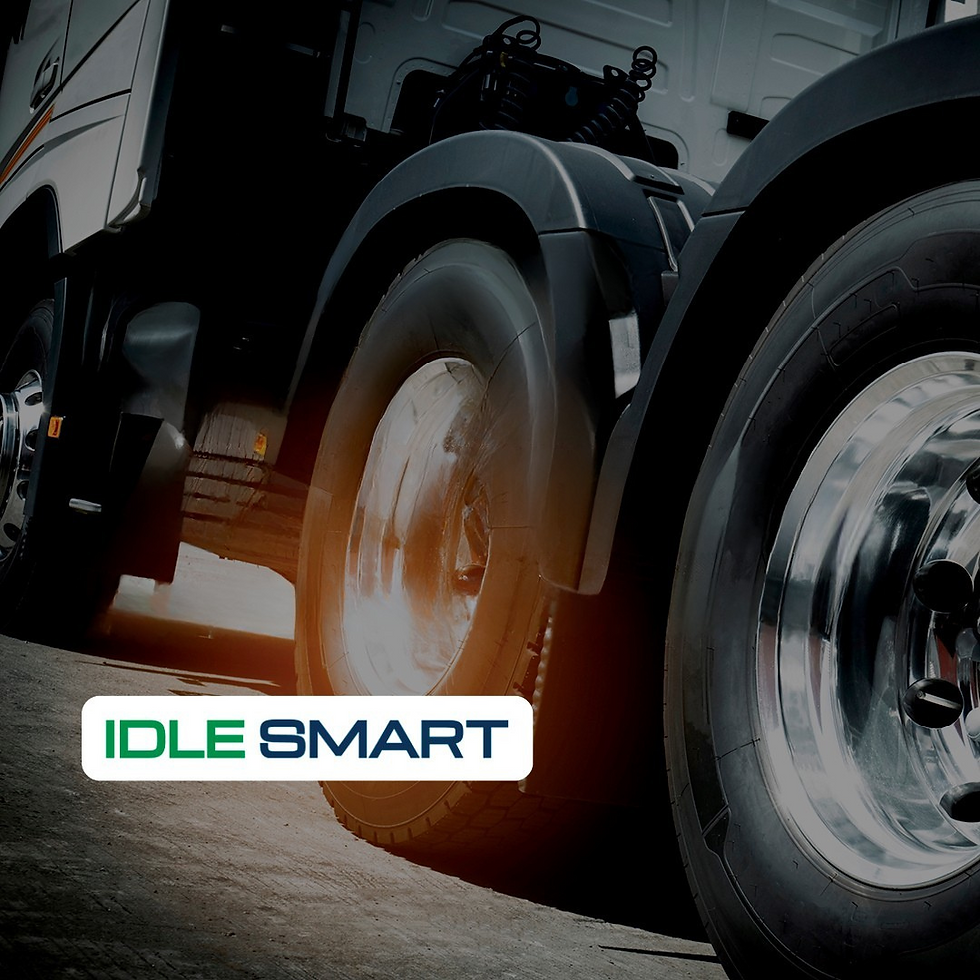Eco-Driven Success: Transforming Small Fleets with Cutting-Edge Idle Reduction Innovations
- Jeff Lynch
- Aug 19, 2024
- 4 min read

Fleet management is undergoing a transformative shift, with an eye on boosting efficiency and sustainability. While fleets and other industry innovators have identified numerous ways to achieve these goals, more and more attention has turned to a common challenge: reducing idling and its massive impact.
This evolution is not just about saving fuel and reducing emissions. It’s about leveraging technology to enhance operational efficiency, improve driver comfort, and contribute to a greener planet. As small fleets look to stay competitive and environmentally conscious, understanding and adopting the latest idle reduction technologies is crucial. In this blog post, we'll explore the future of fleet management and how small fleets can keep up with the rapidly advancing idle reduction technologies.
The Importance of Idle Reduction in Fleet Management
Idling vehicles are more than just a waste of fuel – they're a significant source of unnecessary emissions and operational costs. For fleet managers, reducing idle time is a direct path to decreasing fuel expenses and minimizing environmental impact. But the benefits don't stop there. Idle reduction technologies also play a vital role in extending vehicle life by reducing engine wear and tear, thus saving on maintenance costs and improving vehicle resale value.
Emerging Idle Reduction TechnologiesIdle reduction technologies are growing rapidly and, now, there are a number of hardware and software solutions designed to tackle idling from multiple angles. As you’re considering next steps for your fleet, it’s important to understand where these options excel and where they fall short so you can make the right decision for your team.
1. Automated Engine Start-Stop Systems
Automated engine start-stop systems are becoming increasingly sophisticated – and increasingly popular. These systems automatically shut down the engine when a vehicle is stationary and restart when it's time to move.
This simple mechanism can significantly reduce idling times, especially in urban settings where stop-and-go traffic is common. Advances in this technology are making these systems more reliable and efficient, ensuring that operations like air conditioning and radio continue running even when the engine is off, maintaining driver comfort without compromising fuel savings.
2. Telematics and Fleet Management Software
Telematics systems have revolutionized fleet management by providing real-time data on vehicle location, speed, and idling times. Modern fleet management software can analyze this data to identify idling trends and suggest optimization strategies. For example, software can now predict when and where vehicles will most likely idle and suggest alternative routes or schedules to minimize unnecessary stoppage times. Plus, these systems can enforce idling policies automatically, notifying drivers when they exceed predefined idling limits.
3. Battery-Electric Auxiliary Power Units (APUs)
Battery-electric APUs are a game-changer for long-haul operations where drivers need to maintain cabin temperature or power devices without running the main engine. These units can power a vehicle’s electrical systems, including HVAC, without idling the engine, drastically reducing fuel consumption and emissions during rest periods. As battery technology improves, these APUs become more efficient, lighter, and affordable, making them accessible to smaller fleets.
4. Solar Power Integration
Integrating solar panels into fleet vehicles is an innovative way to support auxiliary power needs without idling. Solar power can charge battery systems for lighting, onboard electronics, and even electric APUs. While not a complete solution for all power needs, solar integration can significantly reduce reliance on the main engine for power, thereby reducing idle times.
5. Advanced Driver-Assistance Systems (ADAS)
ADAS technologies, such as adaptive cruise control and predictive braking, can indirectly reduce idling by optimizing driving patterns and reducing unnecessary stops and starts. These systems help save fuel and reduce engine wear by improving overall driving efficiency, contributing to idle reduction goals.
Implementing Idle Reduction Strategies in Small Fleets
For small fleets, adopting idle reduction technologies requires a strategic approach. Here are some steps to consider:
Assessment and Planning
Evaluate your fleet's specific needs and identify where idle reduction technologies can have the most impact. Consider factors like vehicle types, operational routes, and driver behaviors.
Pilot Programs
Before rolling out new technologies fleet-wide, conduct pilot programs to measure effectiveness and gather driver feedback. This can help refine your approach and ensure the technology fits your operational needs.
Training and Incentivization
Educate drivers on the importance of idle reduction and how to use new technologies effectively. Consider implementing incentive programs to encourage compliance and reward drivers for minimizing idle time.
Monitoring and AdjustmentUse fleet management software to monitor the performance of idle reduction technologies and make adjustments as needed. Continuous monitoring allows for data-driven decisions and helps optimize the benefits of these technologies.
The Road Ahead
The future of fleet management is leaning towards more sustainable and efficient operations. As idle reduction technologies evolve, small fleets that stay informed and adaptable will quickly begin to see reduced operational costs and environmental impact, positioning themselves as leaders in the push for a more sustainable transportation industry. By embracing these emerging technologies, small fleets can ensure they remain competitive in an increasingly eco-conscious market.
What’s clear: the journey towards efficient fleet management through idle reduction technology is an ongoing process of adaptation and improvement. As new technologies emerge and existing solutions become more sophisticated, small fleets' opportunities to optimize their operations and contribute to environmental sustainability have never been greater. With strategic implementation and a commitment to innovation, the future of fleet management looks both promising and green.



